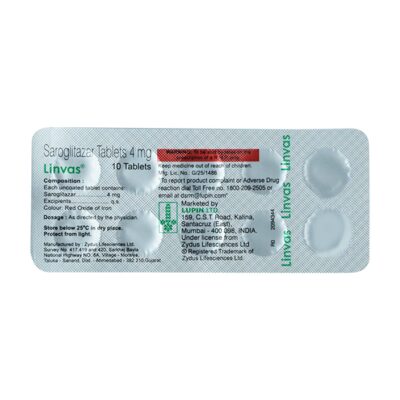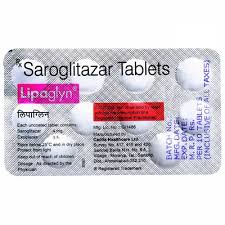🩺🩸 Saroglitazar 4mg Tablet: A Dual-Action Therapy for Diabetic Dyslipidemia and NAFLD
Saroglitazar 4mg is a novel, first-in-class medication designed to treat diabetic dyslipidemia and non-alcoholic fatty liver disease (NAFLD), especially in patients with type 2 diabetes mellitus (T2DM). It is a dual PPAR (Peroxisome Proliferator-Activated Receptor) agonist, offering glucose-lowering and lipid-modifying actions in a single tablet. Developed and approved in India, Saroglitazar is a promising therapy for metabolic syndrome and related liver conditions.
🔬 Mechanism of Action
Saroglitazar is a dual PPARα/γ agonist:
-
PPAR-α activation helps reduce triglycerides, VLDL cholesterol, and non-HDL cholesterol by enhancing fatty acid oxidation and reducing lipogenesis.
-
PPAR-γ activation improves insulin sensitivity, aiding in better glucose uptake by muscle and fat tissues.
This dual action makes it effective in treating patients with high triglyceride levels and insulin resistance, which are common in T2DM and NAFLD/NASH (non-alcoholic steatohepatitis).
📌 Indications and Uses
Saroglitazar 4mg is primarily indicated for:
-
Diabetic Dyslipidemia: Especially in patients whose triglyceride levels remain high (>250 mg/dL) despite statin therapy.
-
Hypertriglyceridemia in type 2 diabetes
-
Non-alcoholic fatty liver disease (NAFLD) and NASH (off-label but increasingly prescribed)
-
Atherogenic dyslipidemia in metabolic syndrome
It is an adjunct to diet and exercise and may be used alone or with other antidiabetic and lipid-lowering agents.
💊 Dosage and Administration
-
Recommended dose: Saroglitazar 4mg tablet once daily, preferably after meals.
-
No dosage adjustment required for mild to moderate renal impairment.
-
Regular follow-up is needed to monitor lipid profile, liver enzymes, and blood glucose levels.
⚠️ Precautions and Warnings
-
Not recommended for:
-
Type 1 diabetes
-
Severe liver dysfunction
-
Pregnancy or breastfeeding
-
-
Use with caution in:
-
Congestive heart failure
-
Patients on statins (risk of liver enzyme elevation)
-
Periodic monitoring of liver function tests (LFTs) and renal function is advised, especially in patients with existing metabolic comorbidities.
🤒 Side Effects
Saroglitazar is generally well-tolerated, but possible side effects include:
Common:
-
Mild gastrointestinal discomfort
-
Headache
-
Flatulence or bloating
-
Increased appetite
Occasional or rare:
-
Elevated liver enzymes (ALT/AST)
-
Fluid retention
-
Weight gain (mild, due to PPAR-γ effect)
Report any signs of jaundice, unusual fatigue, or swelling in the feet or ankles promptly.
🔄 Drug Interactions
-
Can be used with statins, but LFTs must be monitored.
-
May enhance effects of other antidiabetic drugs, increasing risk of hypoglycemia.
-
No significant interactions reported with common antihypertensives or antiplatelets.
🧊 Storage Instructions
-
Store at room temperature (15–30°C)
-
Protect from moisture and direct sunlight
-
Keep out of reach of children
📝 Conclusion
Saroglitazar 4mg offers a dual benefit for patients with type 2 diabetes and dyslipidemia, effectively controlling blood sugar and triglycerides. It is also a promising agent for fatty liver diseases, making it a valuable tool in managing the metabolic complications of diabetes. With regular monitoring, lifestyle management, and proper medical supervision, Saroglitazar can significantly improve long-term cardiovascular and liver health outcomes.
Note: This information is intended for educational purposes and should not replace professional medical advice. Always consult a healthcare provider for personalized guidance.



Reviews
There are no reviews yet.